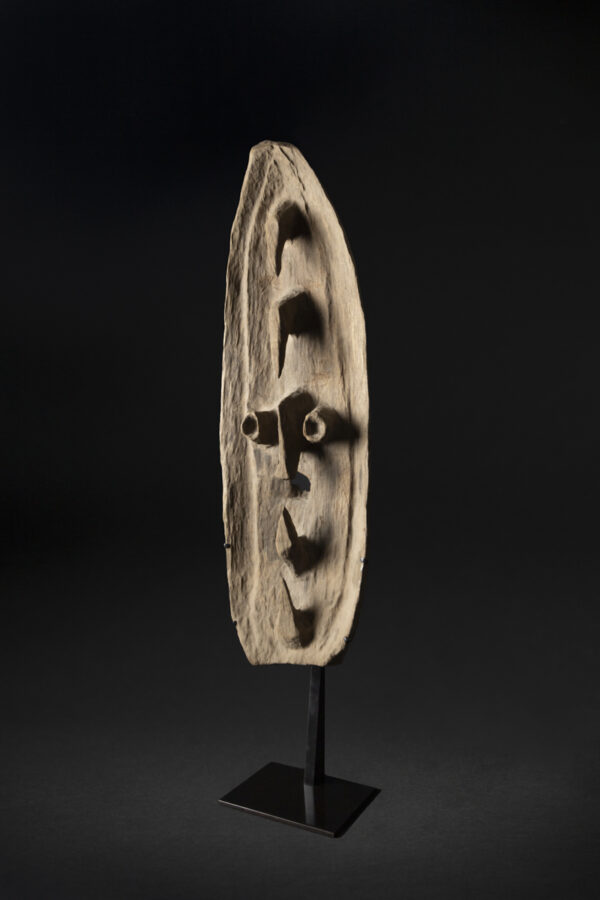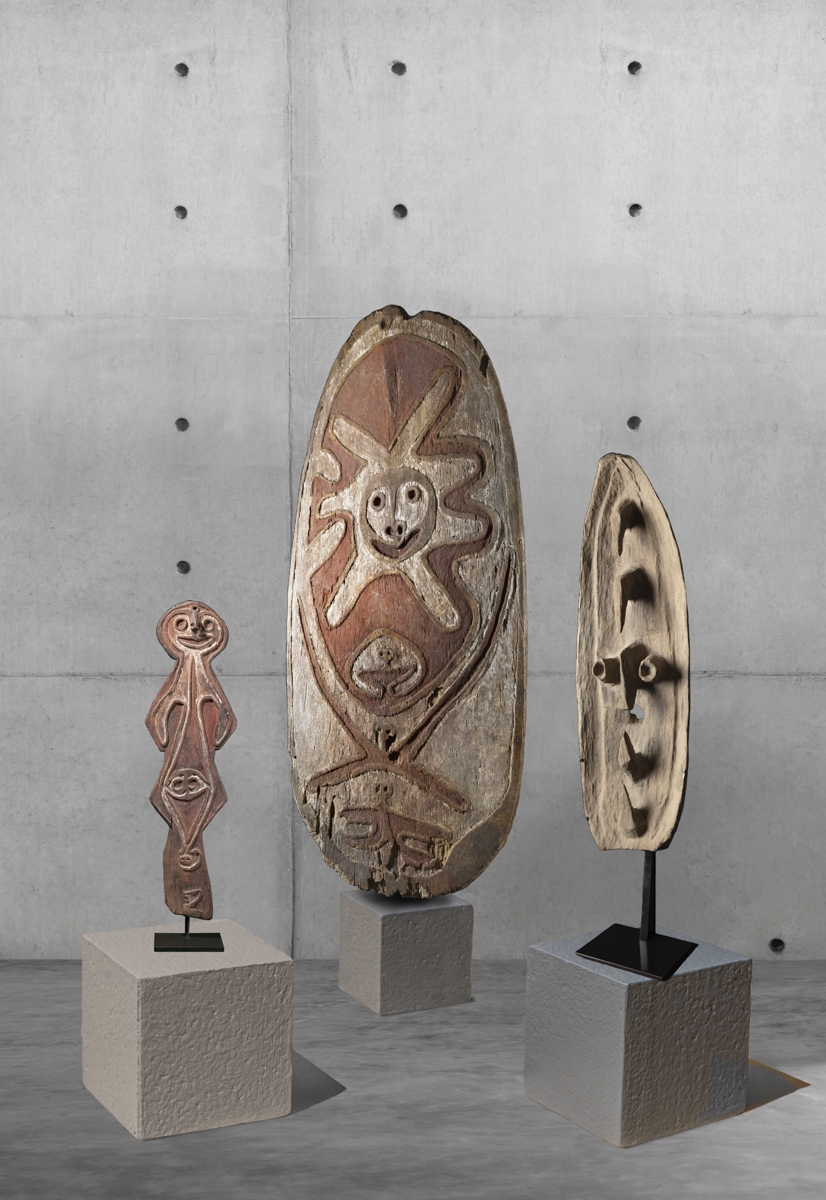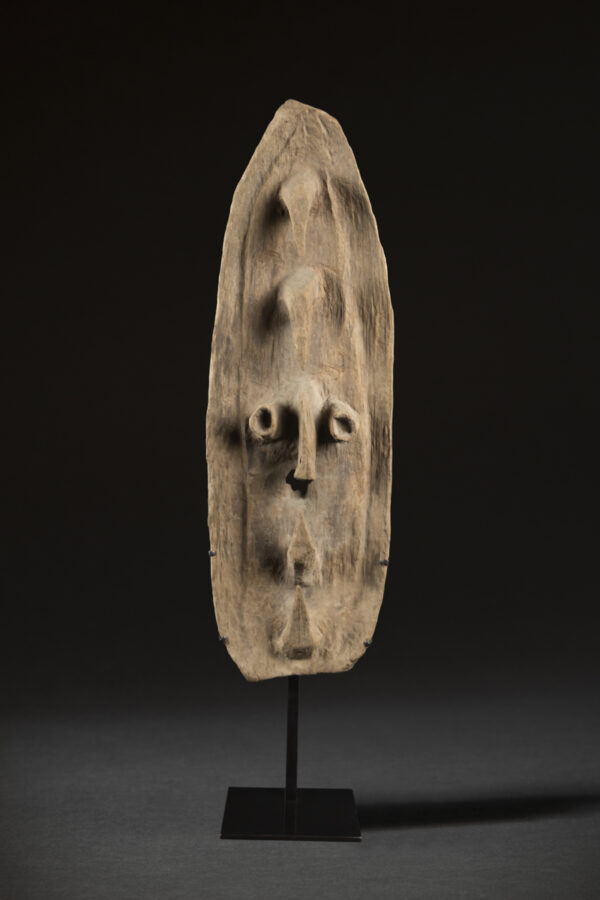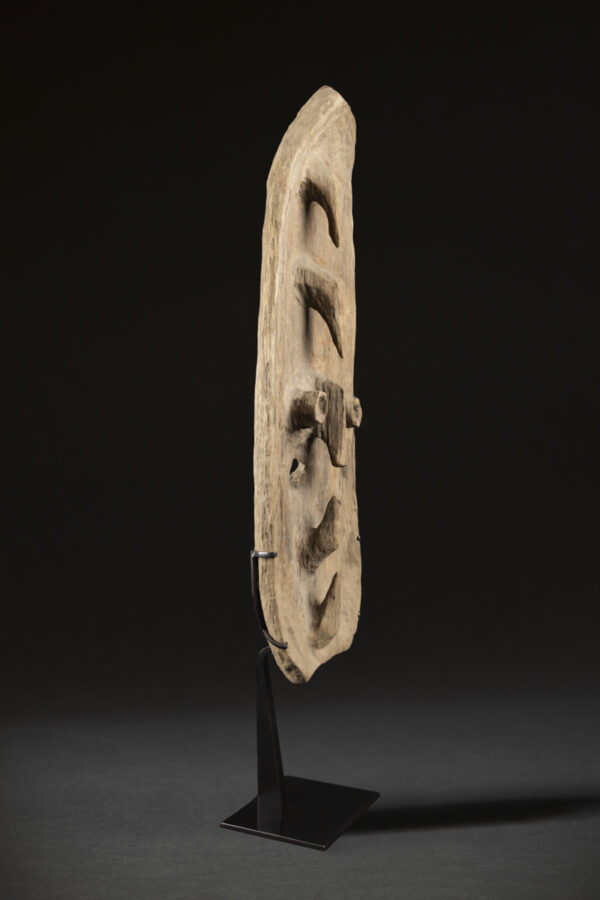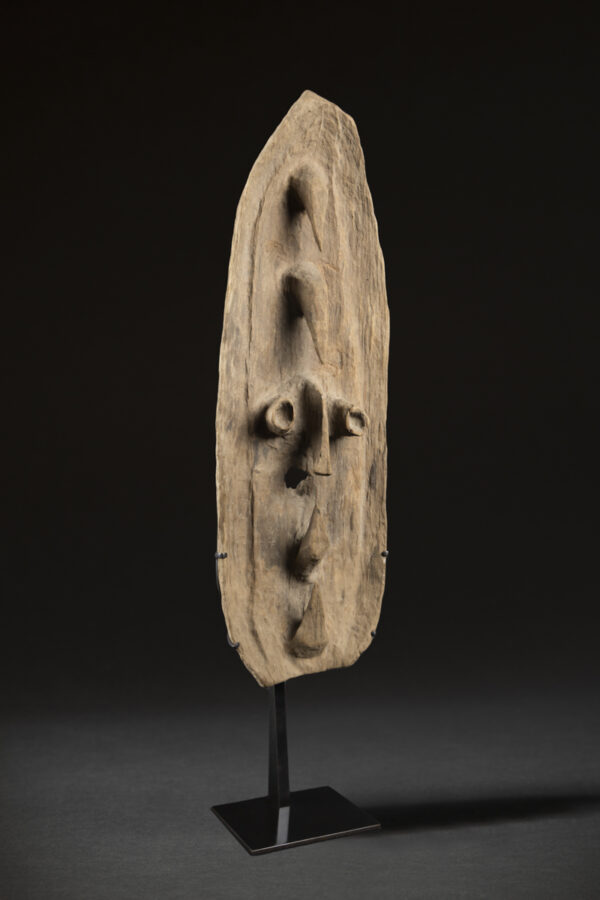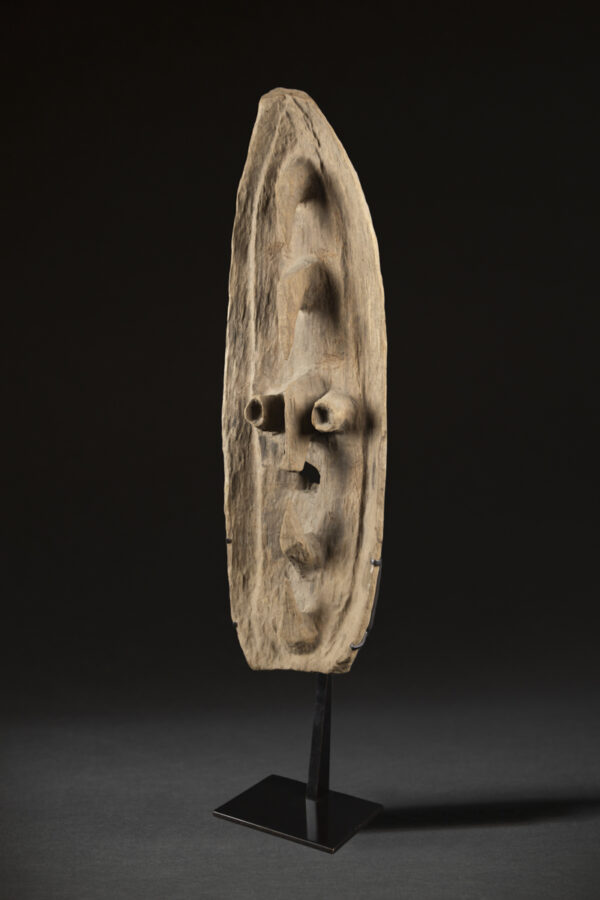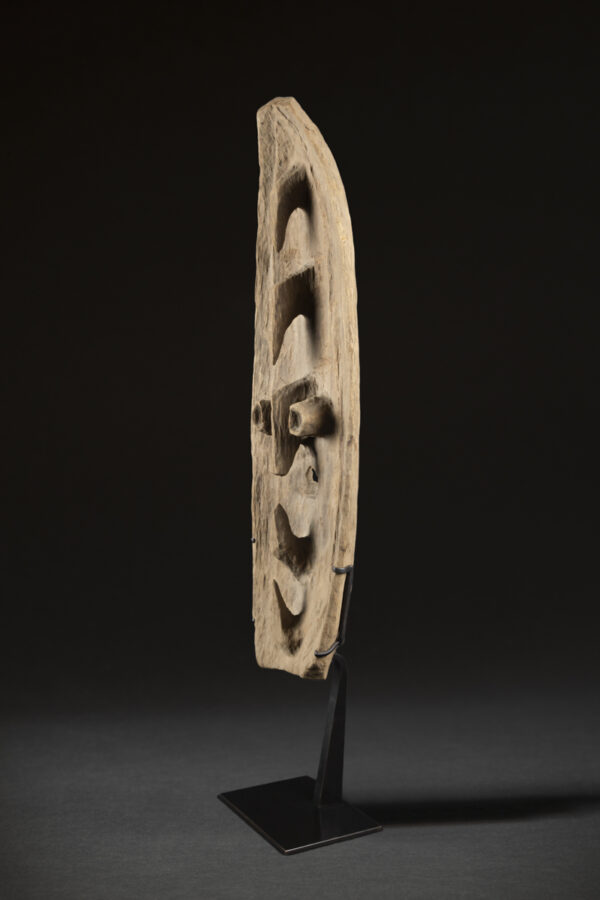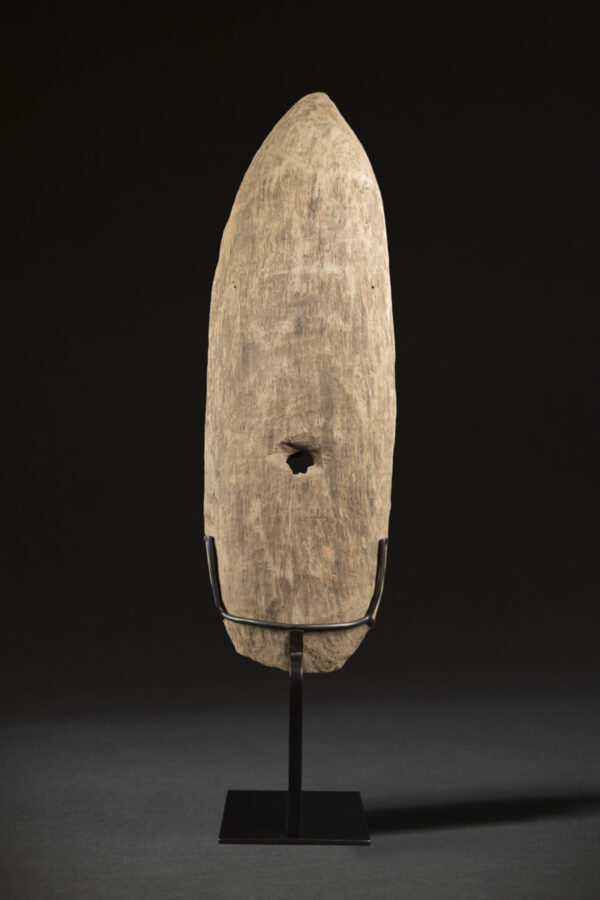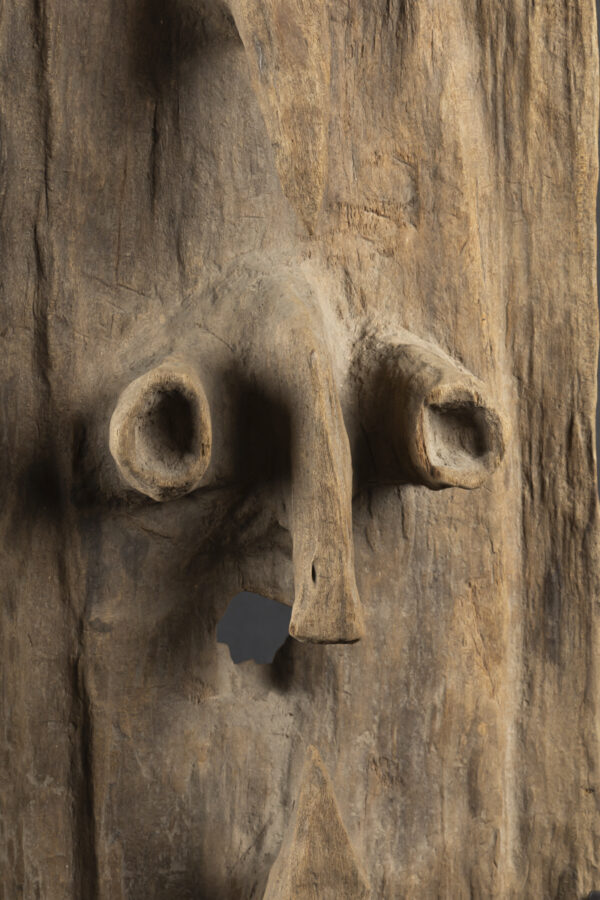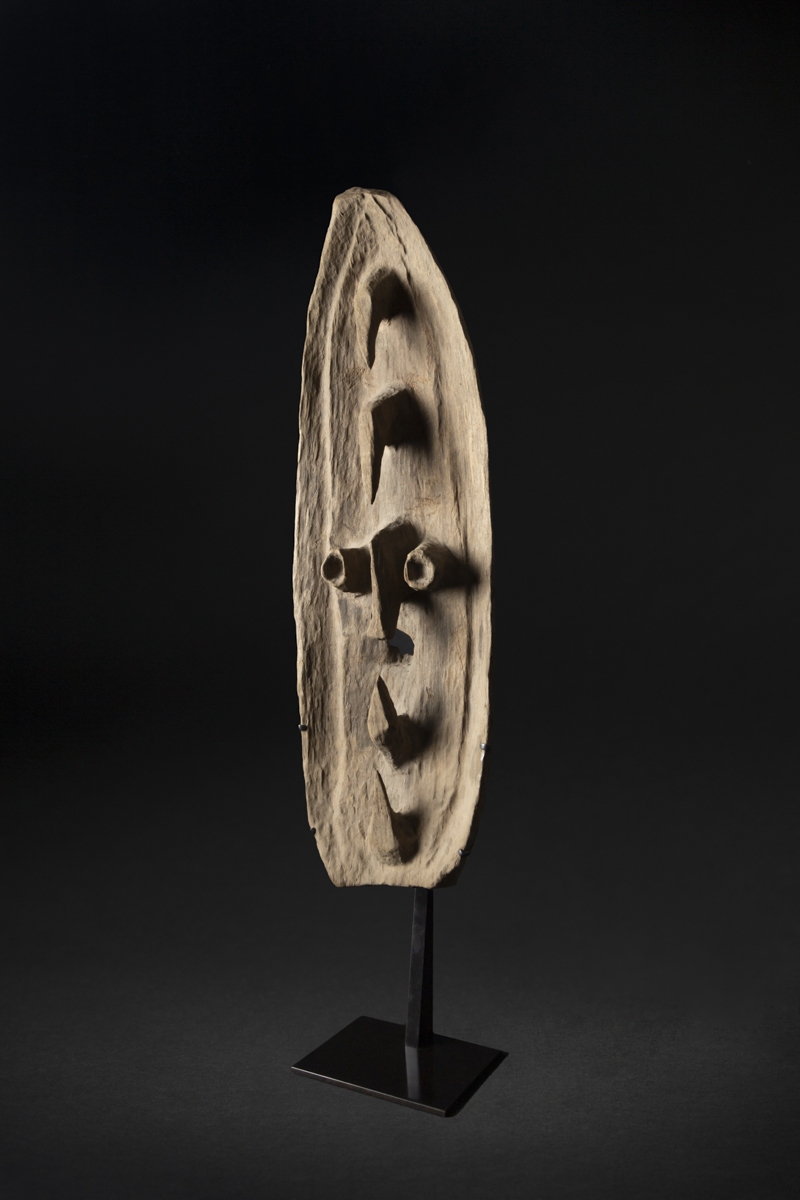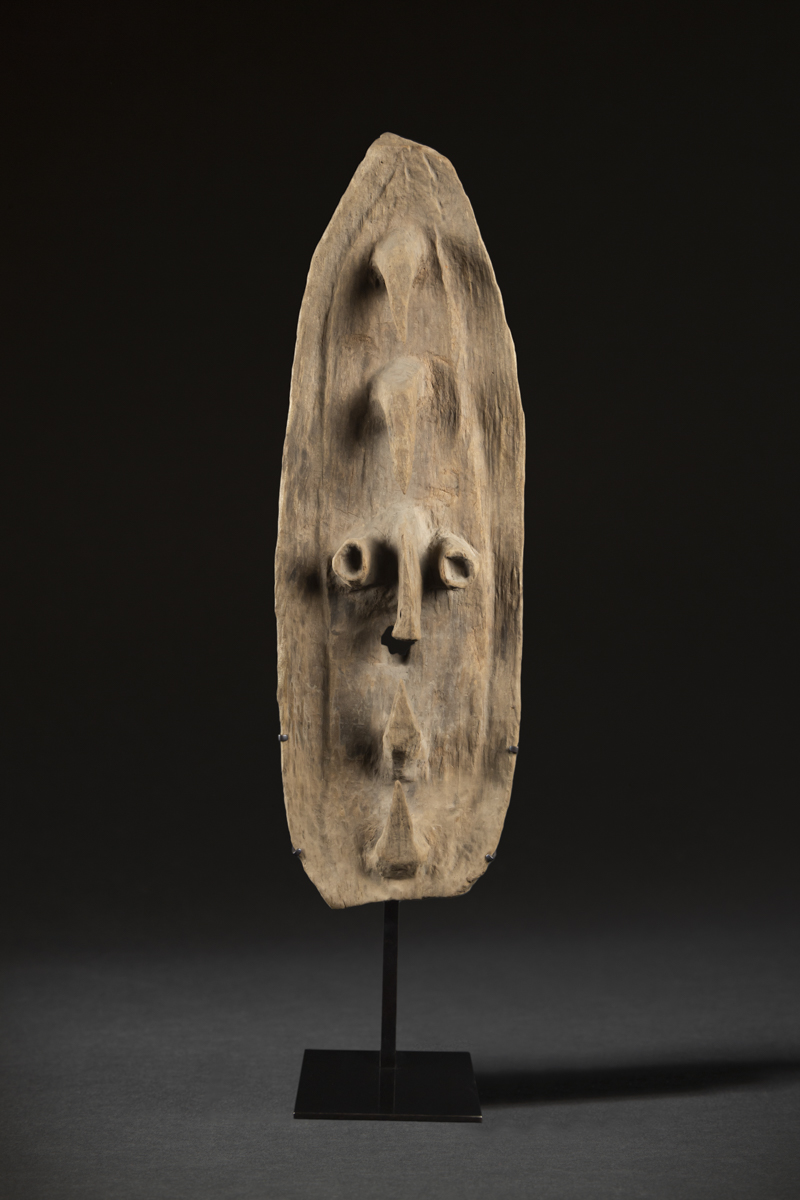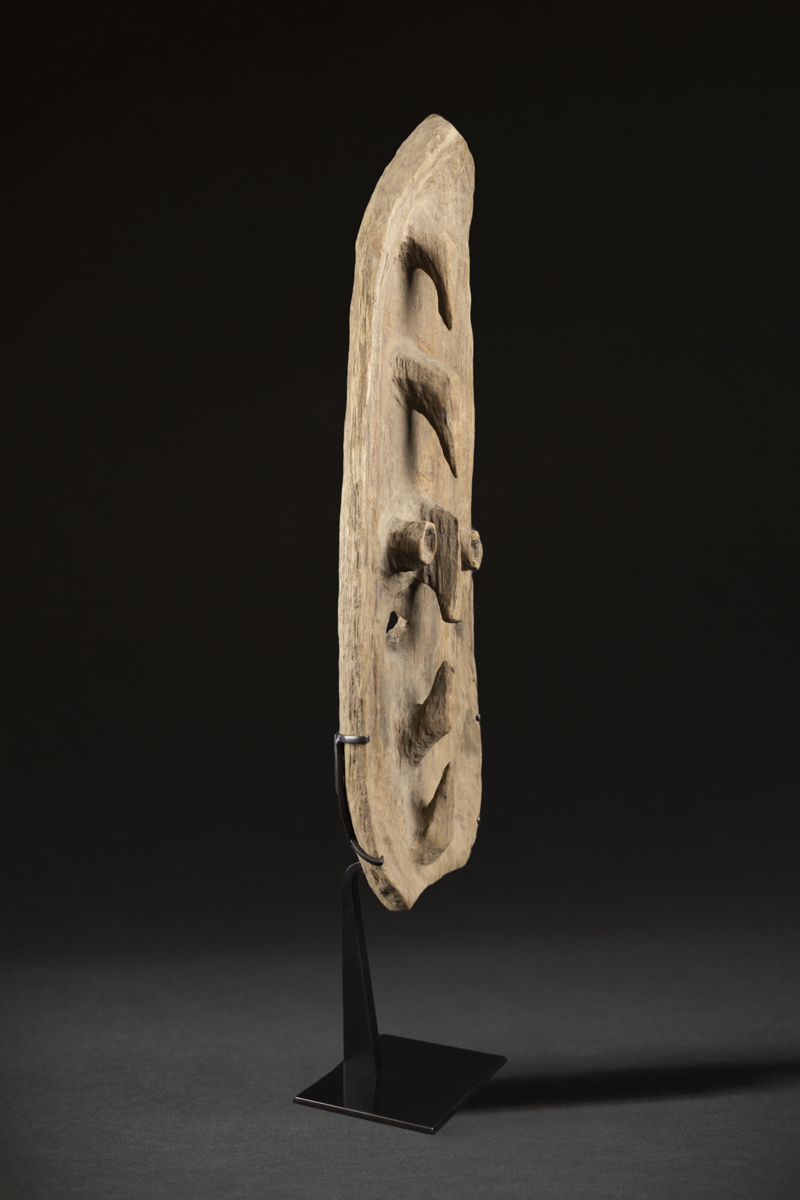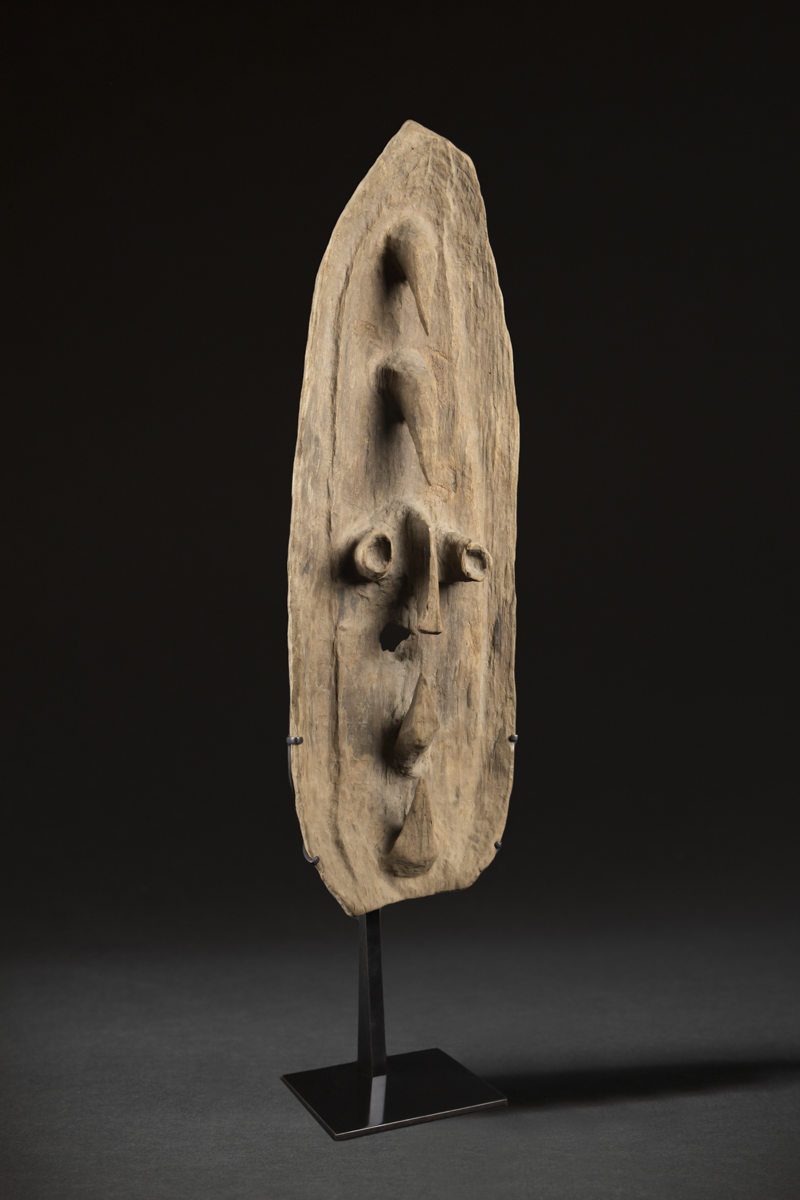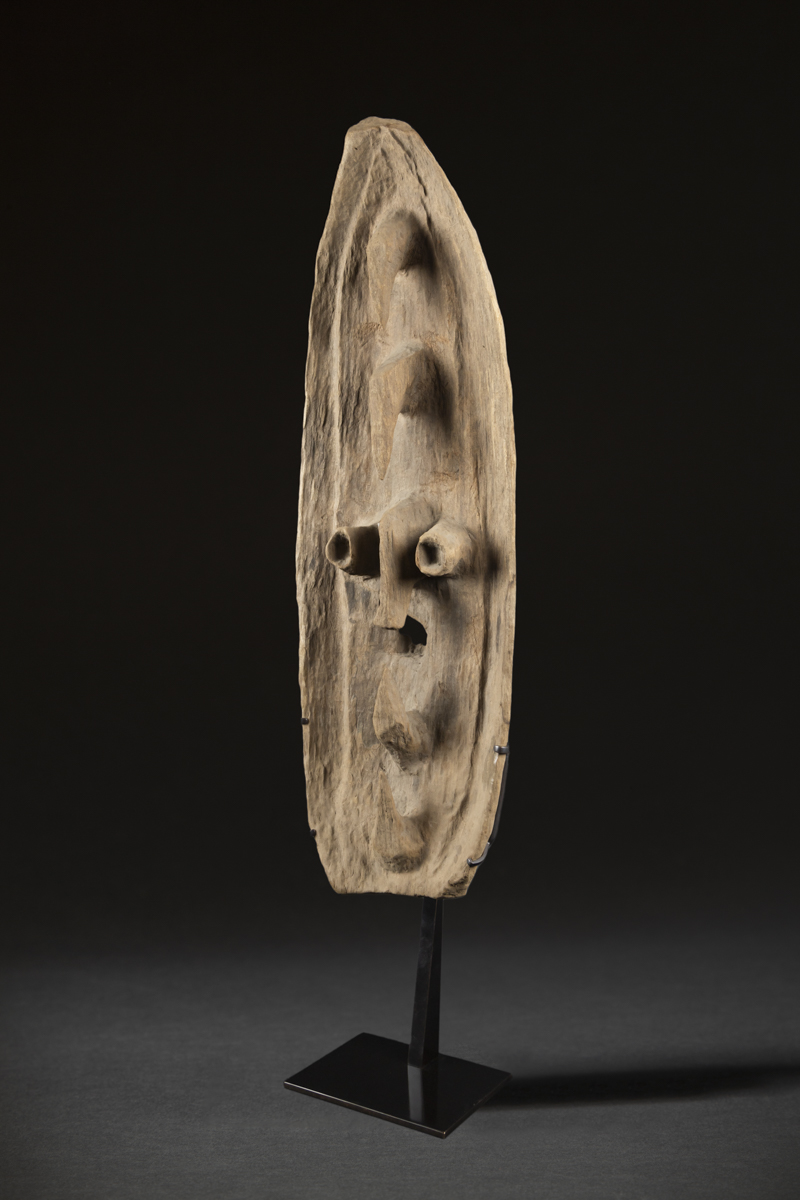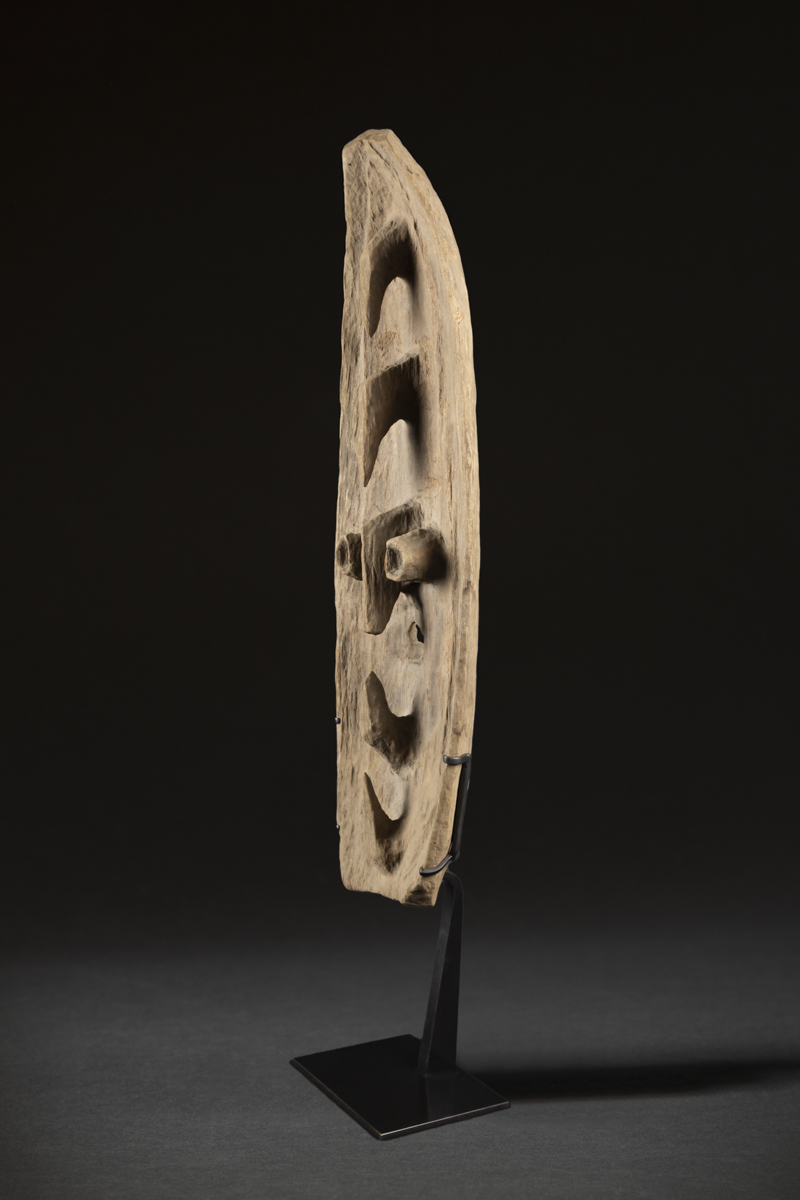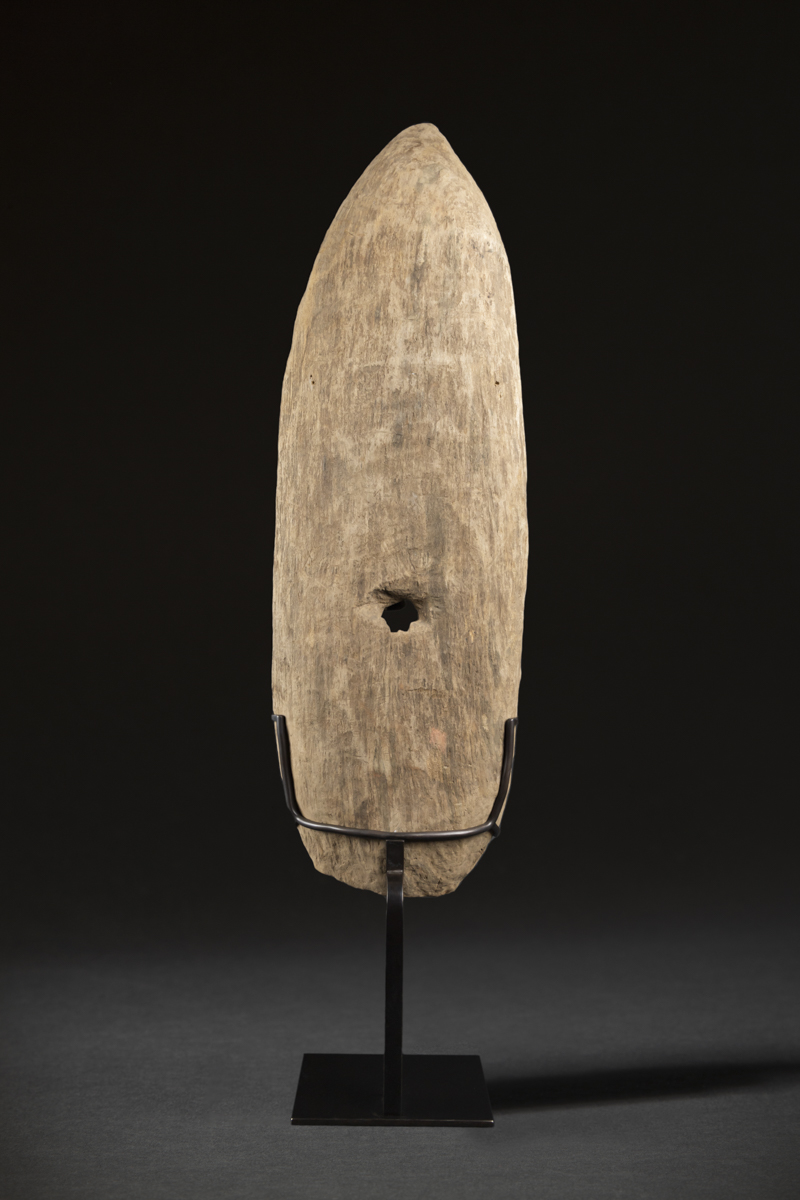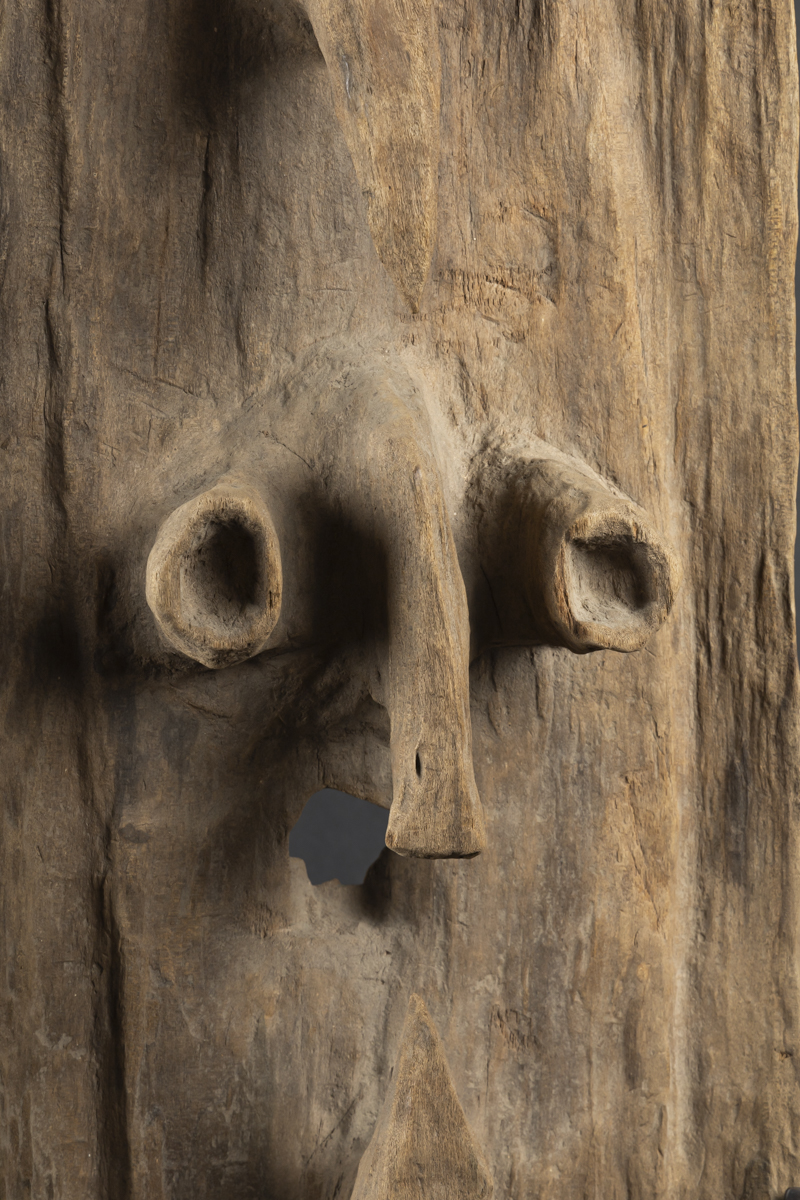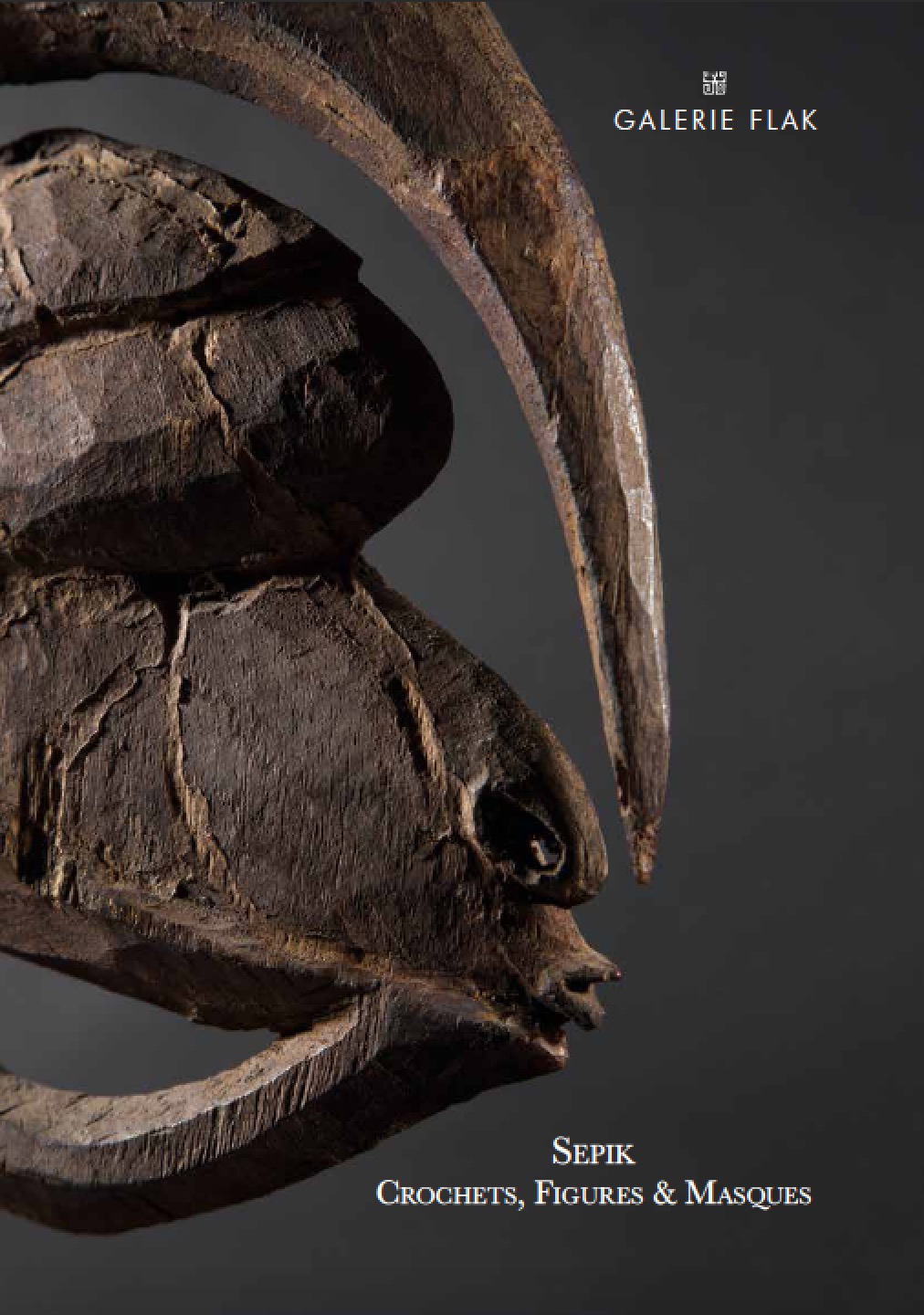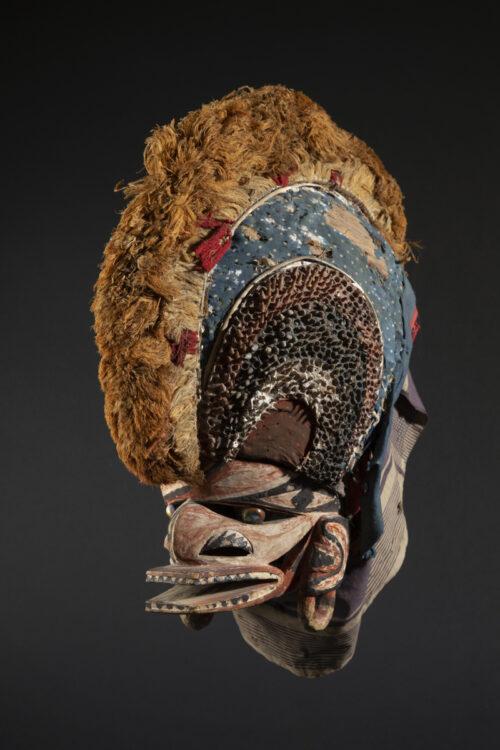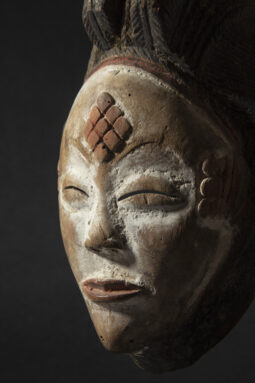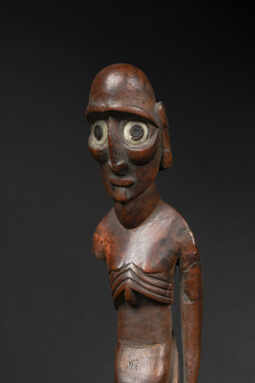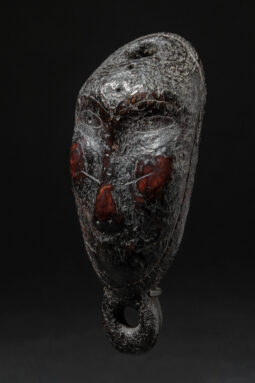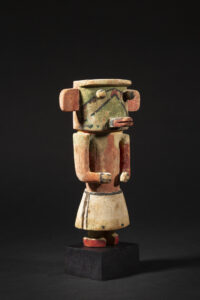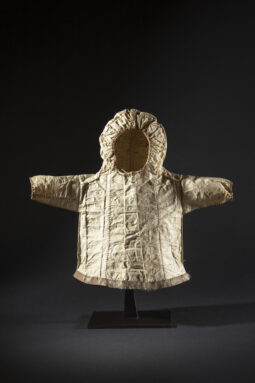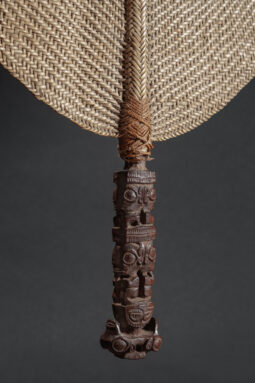oceania | Papua New Guinea
Garra Mask
Papua New Guinea
Garra mask
Bahinemo people
Hunstein Mountains, East Sepik Province
Late 19th or early 20th century (C-14 dating)
Carved wood
Height: 26 ¼ in. – 67.5 cm
Field-collected by Bruce Lawes (1926-2011)
Ex collection Professor McCue, Stanford University, California
Ex collection Alex Arthur, Brussels
Ex collection Marc Assayag, Montreal
Ex collection John Dubrow, New York
Garra Mask Hunstein ex Bruce Lawes / Galerie Flak
Price on request
In the region of the Hunstein Mountains, upriver on the Sepik River and west of the Korewori, garra hooks depict powerful spirits. They were used during initiations by the Bahinemo populations.
As stated by the Metropolitan Museum of Art, stylistically Bahinemo wood sculpture forms part of a broader tradition within Sepik art which incorporates serial distributions of concentric and opposing hook features, the most widely renowned being the highly-abstracted yipwon figures produced by the Yimam peoples further east. Admired by European modernists for their radical re-conception of the human form, these distinctive sculptures caused a sensation in the 1950s when the first examples became known outside the region. Bahinemo examples fall broadly into two categories: flat, mask-like panels with stylized human faces that are bracketed by small hook features (see Metropolitan Museum inv. 1978.412.1526) and tall, slender images intended to be seen in profile, which comprise a series of large concentric hooks around a central triangular or oval projection (see Metropolitan Museum inv.1976.248.2).
Each type of hook-mask figure is broadly associated with a different category of spirits. While interpretation of their imagery varies, the hook features of the flat mask panels are typically interpreted as hornbill’s beaks, while the longer, more extended images tend to be identified as stylized catfish, the hooks representing their curling whiskers. The flat, mask-like images were the focus of male initiation rites and hunting and were linked to senior men, elders of the clan and forest spirits. The association with hornbills derives from the fact that the birds nest in locations where bush spirits are known to dwell. Furthermore, the consumption of hornbills themselves, as well as the use of their spectacular feathers and beaks, were the reserve of initiated elders. When not in use, the images were stored in the men’s ceremonial house along with other sacred objects or suspended from the rafters, safely concealed from uninitiated eyes. The more slender hooklike figures tend to be associated with water spirits and were ideally immersed in swamps or other watery places. Although all garra figures fall into these two broad categories, each portrays a specific spirit whose name and powers were intimately known to the individual man who owned it.
In former times, the focus of artistic and religious life among the Bahinemo people of the Hunstein mountains south of the middle Sepik River was the men’s ceremonial house, in which initiation and other rites took place and sacred objects, collectively called gra or garra, were kept. Bahinemo artists created two distinct forms of hook figures: flat, mask-like panels with stylized human faces bracketed by hook-shaped forms and tall slender images, intended to be seen in profile, consisting of a series of concentric hooks surrounding a central projection. Mask-like forms were associated, broadly, with forest spirits, while the slender profile images were connected with water spirits, their curving hooks identified, in some cases, as catfish whiskers. Like the hook figures (yipwon) of the Yimam people, Bahinemo hook images formerly served as hunting helpers, their supernatural powers assisting in the capture of game. They also played a role in male initiation ceremonies, in which they were carried by initiated men during dances.
As stated by the Metropolitan Museum of Art, stylistically Bahinemo wood sculpture forms part of a broader tradition within Sepik art which incorporates serial distributions of concentric and opposing hook features, the most widely renowned being the highly-abstracted yipwon figures produced by the Yimam peoples further east. Admired by European modernists for their radical re-conception of the human form, these distinctive sculptures caused a sensation in the 1950s when the first examples became known outside the region. Bahinemo examples fall broadly into two categories: flat, mask-like panels with stylized human faces that are bracketed by small hook features (see Metropolitan Museum inv. 1978.412.1526) and tall, slender images intended to be seen in profile, which comprise a series of large concentric hooks around a central triangular or oval projection (see Metropolitan Museum inv.1976.248.2).
Each type of hook-mask figure is broadly associated with a different category of spirits. While interpretation of their imagery varies, the hook features of the flat mask panels are typically interpreted as hornbill’s beaks, while the longer, more extended images tend to be identified as stylized catfish, the hooks representing their curling whiskers. The flat, mask-like images were the focus of male initiation rites and hunting and were linked to senior men, elders of the clan and forest spirits. The association with hornbills derives from the fact that the birds nest in locations where bush spirits are known to dwell. Furthermore, the consumption of hornbills themselves, as well as the use of their spectacular feathers and beaks, were the reserve of initiated elders. When not in use, the images were stored in the men’s ceremonial house along with other sacred objects or suspended from the rafters, safely concealed from uninitiated eyes. The more slender hooklike figures tend to be associated with water spirits and were ideally immersed in swamps or other watery places. Although all garra figures fall into these two broad categories, each portrays a specific spirit whose name and powers were intimately known to the individual man who owned it.
In former times, the focus of artistic and religious life among the Bahinemo people of the Hunstein mountains south of the middle Sepik River was the men’s ceremonial house, in which initiation and other rites took place and sacred objects, collectively called gra or garra, were kept. Bahinemo artists created two distinct forms of hook figures: flat, mask-like panels with stylized human faces bracketed by hook-shaped forms and tall slender images, intended to be seen in profile, consisting of a series of concentric hooks surrounding a central projection. Mask-like forms were associated, broadly, with forest spirits, while the slender profile images were connected with water spirits, their curving hooks identified, in some cases, as catfish whiskers. Like the hook figures (yipwon) of the Yimam people, Bahinemo hook images formerly served as hunting helpers, their supernatural powers assisting in the capture of game. They also played a role in male initiation ceremonies, in which they were carried by initiated men during dances.
Publication
Explore the entire collection
